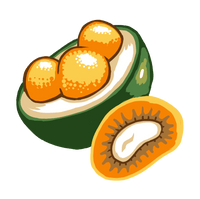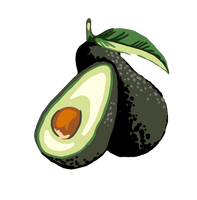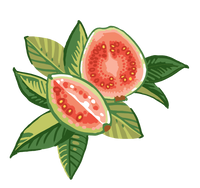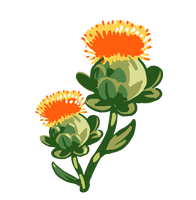
Our Approach
Ingredients Test Page

Clean Formulas
Born at the intersection of farms and labs, featuring clean and natural ingredients

From Latin America
We intentionally curate natural ingredients from the hearts of Latin America

Vegan
Our products feature nutrient-rich, raw ingredients straight from nature

Cruelty Free
Our formulas are guided by our commitment to people, animals and the Earth
${this.currentSlide} / ${this.totalSlides}
We say no to
Our Free-of List
We care as much about the ingredients we choose not to include, as we do the ones we consciously include.
Did you know that Europe has banned over 1,600 harmful and potentially toxic ingredients, while the U.S. only bans 30 of them? At Ceremonia we pride ourselves in pushing the boundaries of what the future of beauty can be and have banned over 1,600 ingredients and beyond, following the EU framework.
We exclude ingredients linked to skin irritations and allergies, hormone disruption, cancer, as well as ingredients that negatively impact the environment and welfare of animals. The below lists all the categories where the 1,600+ ingredients fall under.
Made with synthetic chemicals and may contain heavy metals salts that can deposit toxicity onto the skin. These toxins increase your risk of skin sensitivity, irritation, allergies and are known for blocking pores.
Butylated Hydroxyanisole (BHA) is a synthetic antioxidant and preservative that prevents products from going bad.
Butylated Hydroxytoluene (BHT) is a carbon-based preservative that prevents products from going bad.
Helps to adjust the pH of a product to keep it from degrading when stored in a container. DEA and DEA-related ingredients also function as foaming agents in cosmetics.
These compounds work as an antimicrobial agent and preservative. They release a small amount of formaldehyde over the shelf-life of a product and include many compounds such as Dmdm Hydantoin, Diazolidinyl Urea and Benzyl Hemiformal amongst many others.
Solvent used as an additive in perfumes. Also includes 2-Methoxyethanol.
Methylchloroisothiazolinone (MCI) and Methylisothiazolinone (MIT) are preservatives active against bacteria, yeast and fungi.
An amino acid alcohol used as an antiseptic and disinfectant.
Chemicals used as cleansing agents. The purpose of these sulfates is to create a lathering effect creating the foamy texture you get when you massage shampoo into your hair and scalp.
Toxic solvent, mostly found in nail products and hair dyes. EWG considers toluene to be one of the most toxic ingredients on the market.
It’s a byproduct from aluminum manufacturing, used as a color additive.
Butylated Hydroxyanisole (BHA) is a synthetic antioxidant and preservative that prevents products from going bad.
Active ingredients included in chemical sunscreens absorb into the skin and then absorb UV rays, convert the rays into heat and then release the heat from the skin. Includes Benzophenone, Oxybenzone, Octinoxate amongst others.
Commonly used as a preservative to typically extend the shelf life of products way beyond what’s truly needed. Includes Butylparaben, Isopropylparaben, Methylparaben.
Mainly used in different products because of their oil-, stain- and water-repellent properties. Includes PFASs or PFCs.
Plasticizing chemicals, used to make plastics more flexible and harder to break. Some of them are also being used as dissolving agents for other materials.
An amino acid alcohol used as an antiseptic and disinfectant.
Antibacterial and antifungal compounds used in personal care to reduce or prevent bacterial contamination.
Butylated Hydroxyanisole (BHA) is a synthetic antioxidant and preservative that prevents products from going bad.
Butylated Hydroxytoluene (BHT) is a carbon-based preservative that prevents products from going bad.
Being synthetically produced using carcinogens, they are potentially contaminated with cancer causing substances. Includes Polysorbate-40, Steareth-20, Sodium Laureth Sulfate (SLES), Sodium Lauryl Sulfate (SLS), Ammonium Laureth Sulfate (ALS) amongst others.
These compounds work as an antimicrobial agent and preservative. They release a small amount of formaldehyde over the shelf-life of a product. Includes Formaldehyde "releasers" or "donors" including Formaldehyde Resin, Methenamine, Benzyl Hemiformal amongst others.
Mainly used in different products because of their oil-, stain- and water-repellent properties. Includes PFASs or PFCs.
Petrolatum is a semisolid mixture derived from processed petroleum. Mineral Oil, Paraffin Wax, Liquid Paraffin, and several other ingredients are byproducts from petroleum distillation.
A stabilizer used in cosmetics to prevent ingredients in a given formula from binding with trace elements (minerals) that can be present in water. EDTA also keeps other ingredients from causing unwanted changes to a product’s texture, odor and/or consistency.
Defined as: mainly used in different products because of their oil, stain and water-repellent properties.
Used in hair care products as a sealant against water and air, it gives the hair the illusion of shine, but it is not the shine we really want- it’s artificial shine from the light reflecting on the plastic seal. Silicones also form a coating around hair cuticles, which gives the hair a conditioned feel, but it ironically actually prevents the hair from absorbing moisture, meaning it does more harm than good. Silicones can also weigh the hair down, as it can behave like a magnet for dirt and other ingredients. Last but not least, silicones are believed to not be non-degradable and persist in the environment, meaning they end up in nature after you rinse them off.
Antibacterial and antifungal compounds used in personal care to reduce or prevent bacterial contamination.
Any material derived from the body of an animal, including Animal Musks and Animal Fats, used as emollients, emulsifier, colorants and film foaming agents amongst others.
Made with synthetic chemicals and may contain heavy metals salts that can deposit toxicity onto the skin. These toxins increase your risk of skin sensitivity, irritation, allergies and are known for blocking pores.
These compounds work as an antimicrobial agent and preservative. They release a small amount of formaldehyde over the shelf-life of a product and include many compounds such as Dmdm Hydantoin, Diazolidinyl Urea and Benzyl Hemiformal amongst many others.
Chemicals used as cleansing agents. The purpose of these sulfates is to create a lathering effect creating the foamy texture you get when you massage shampoo into your hair and scalp.
Active ingredients included in chemical sunscreens absorb into the skin and then absorb UV rays, convert the rays into heat and then release the heat from the skin. Includes Benzophenone, Oxybenzone, Octinoxate amongst others.
An amino acid alcohol used as an antiseptic and disinfectant.
Being synthetically produced using carcinogens, they are potentially contaminated with cancer causing substances. Includes Polysorbate-40, Steareth-20, Sodium Laureth Sulfate (SLES), Sodium Lauryl Sulfate (SLS), Ammonium Laureth Sulfate (ALS) amongst others.
A stabilizer used in cosmetics to prevent ingredients in a given formula from binding with trace elements (minerals) that can be present in water. EDTA also keeps other ingredients from causing unwanted changes to a product’s texture, odor and/or consistency.
Any material derived from the body of an animal, including Animal Musks and Animal Fats, used as emollients, emulsifier, colorants and film foaming agents amongst others.
Butylated Hydroxyanisole (BHA) is a synthetic antioxidant and preservative that prevents products from going bad.
Solvent used as an additive in perfumes. Also includes 2-Methoxyethanol.
Toxic solvent, mostly found in nail products and hair dyes. EWG considers toluene to be one of the most toxic ingredients on the market.
Commonly used as a preservative to typically extend the shelf life of products way beyond what’s truly needed. Includes Butylparaben, Isopropylparaben, Methylparaben.
Antibacterial and antifungal compounds used in personal care to reduce or prevent bacterial contamination.
These compounds work as an antimicrobial agent and preservative. They release a small amount of formaldehyde over the shelf-life of a product. Includes Formaldehyde "releasers" or "donors" including Formaldehyde Resin, Methenamine, Benzyl Hemiformal amongst others.
Defined as: mainly used in different products because of their oil, stain and water-repellent properties.
Butylated Hydroxytoluene (BHT) is a carbon-based preservative that prevents products from going bad.
Methylchloroisothiazolinone (MCI) and Methylisothiazolinone (MIT) are preservatives active against bacteria, yeast and fungi.
It’s a byproduct from aluminum manufacturing, used as a color additive.
Mainly used in different products because of their oil-, stain- and water-repellent properties. Includes PFASs or PFCs.
Butylated Hydroxyanisole (BHA) is a synthetic antioxidant and preservative that prevents products from going bad.
Mainly used in different products because of their oil-, stain- and water-repellent properties. Includes PFASs or PFCs.
Used in hair care products as a sealant against water and air, it gives the hair the illusion of shine, but it is not the shine we really want- it’s artificial shine from the light reflecting on the plastic seal. Silicones also form a coating around hair cuticles, which gives the hair a conditioned feel, but it ironically actually prevents the hair from absorbing moisture, meaning it does more harm than good. Silicones can also weigh the hair down, as it can behave like a magnet for dirt and other ingredients. Last but not least, silicones are believed to not be non-degradable and persist in the environment, meaning they end up in nature after you rinse them off.
Helps to adjust the pH of a product to keep it from degrading when stored in a container. DEA and DEA-related ingredients also function as foaming agents in cosmetics.
An amino acid alcohol used as an antiseptic and disinfectant.
Butylated Hydroxyanisole (BHA) is a synthetic antioxidant and preservative that prevents products from going bad.
Plasticizing chemicals, used to make plastics more flexible and harder to break. Some of them are also being used as dissolving agents for other materials.
Butylated Hydroxytoluene (BHT) is a carbon-based preservative that prevents products from going bad.
Petrolatum is a semisolid mixture derived from processed petroleum. Mineral Oil, Paraffin Wax, Liquid Paraffin, and several other ingredients are byproducts from petroleum distillation.
Antibacterial and antifungal compounds used in personal care to reduce or prevent bacterial contamination.





